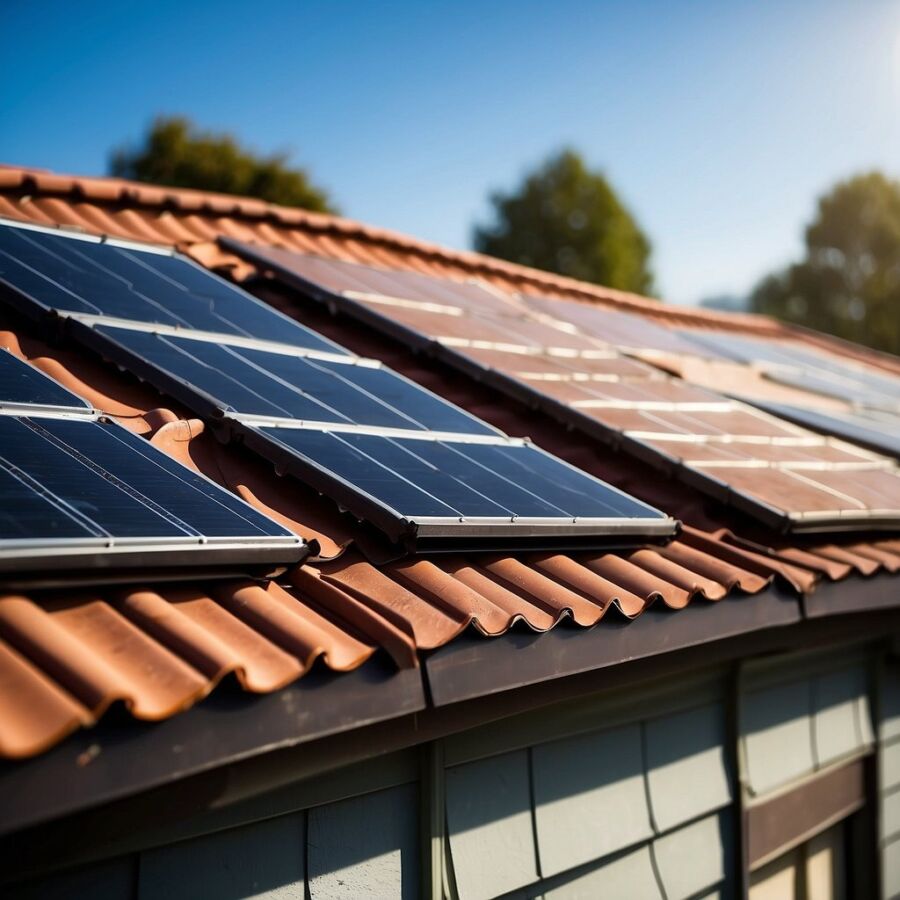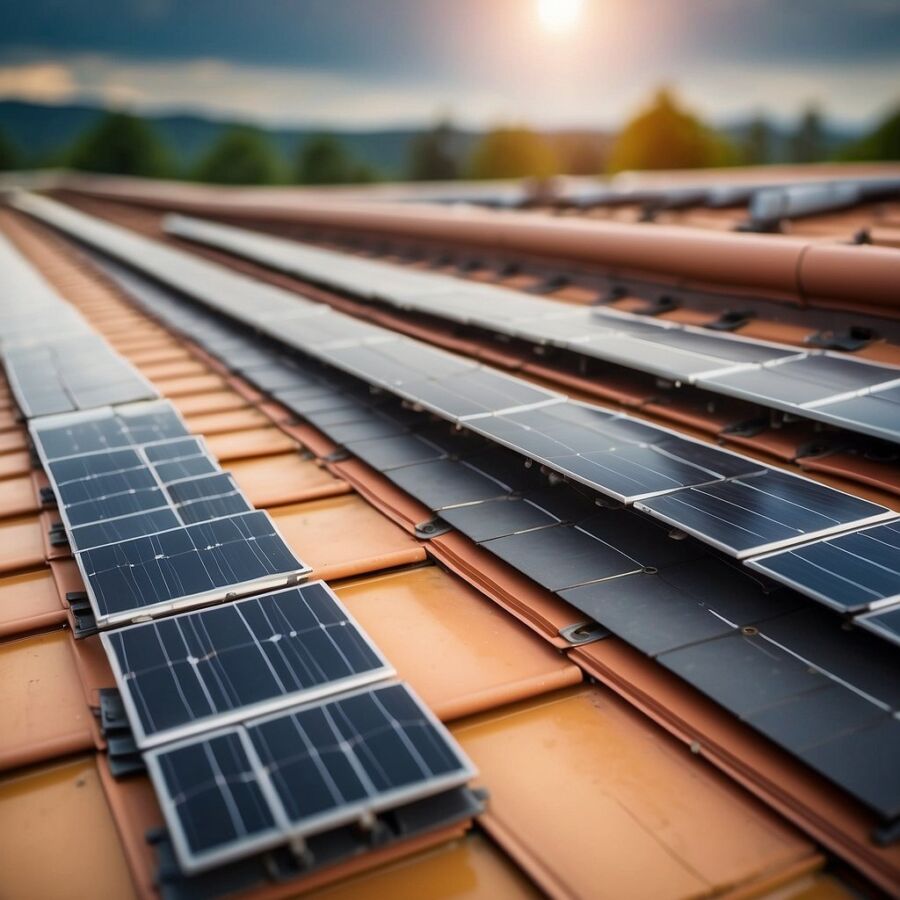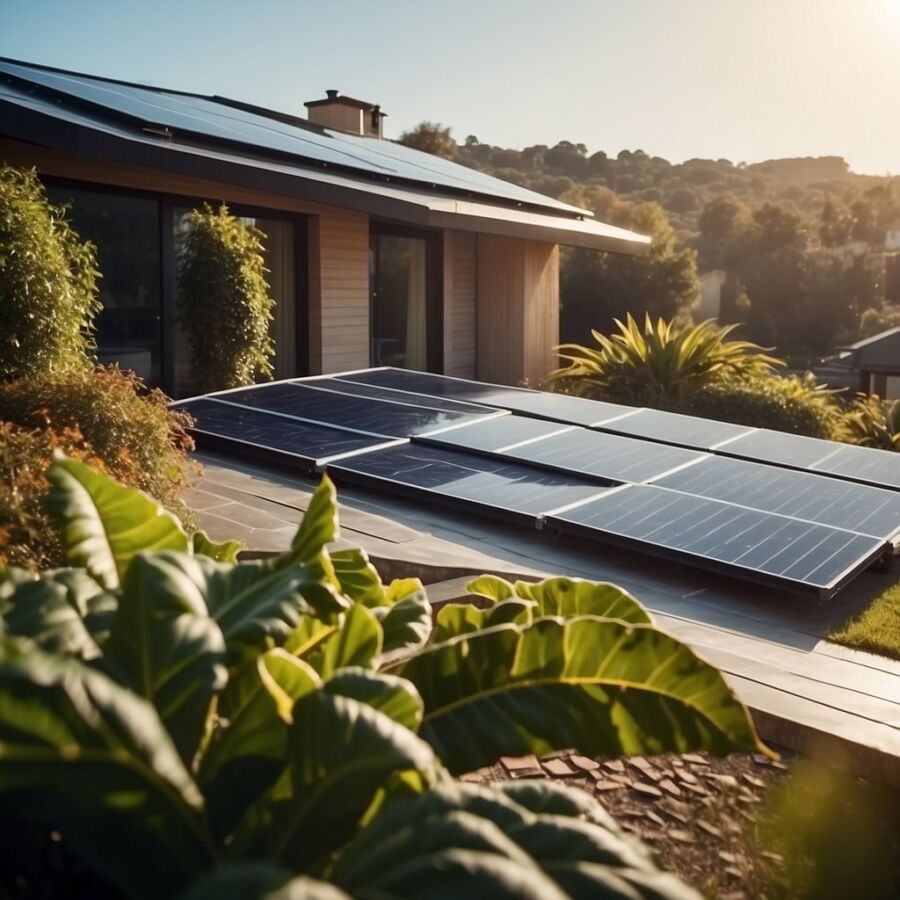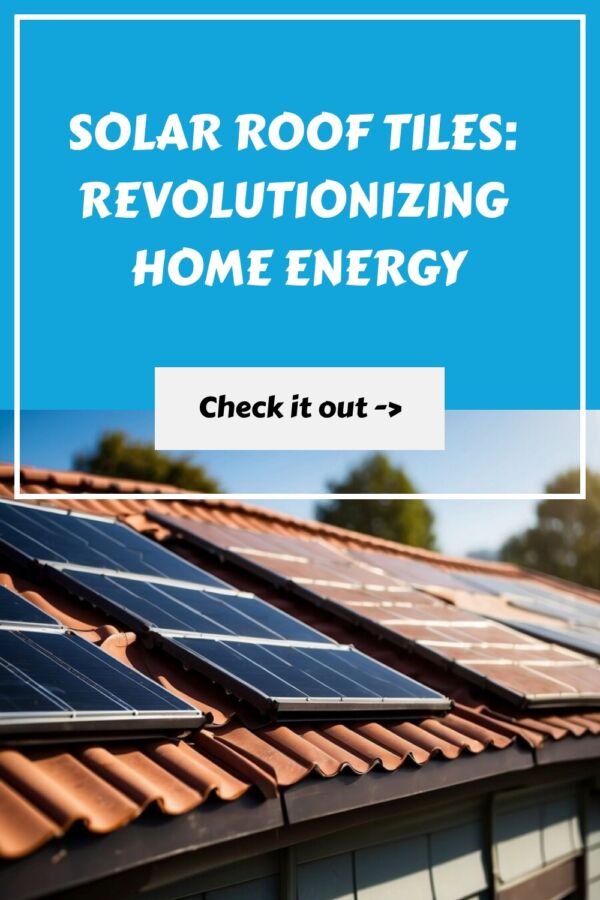Solar roof tiles represent an innovative convergence of roofing materials and photovoltaic technology, marking a significant stride in clean energy generation for residential and commercial buildings. These tiles, also known as solar shingles, integrate the capacity to convert sunlight into electricity directly into the roofing surface, providing a seamless and aesthetically pleasing alternative to traditional solar panels.
While conventional panels are mounted on top of existing roofing, solar roof tiles are the outer layer, preserving the structure’s design while harnessing solar energy.

The efficiency of solar roof tiles in producing clean energy is comparable to standard solar panels, yet they offer a distinct advantage in terms of design.
Manufacturers have developed these tiles with both functionality and aesthetics in mind, allowing homeowners to maintain the visual appeal of their homes without the need for bulky, retrofitted installations.
This blend of form and function positions solar roof tiles at the forefront of solar technology, appealing to a growing segment of consumers interested in energy solutions that do not compromise the style of their living spaces.
Advancements in solar roof technology continue to elevate the role of solar shingles in energy-efficient construction. They reflect a forward-looking approach that merges traditional roofing materials with sophisticated, clean energy technology, ultimately contributing to a future where every home has the potential to be a miniature power plant.
As this technology matures, its potential to transform rooftops into engines for clean energy production promises to be a pivotal development in reducing reliance on fossil fuels and mitigating the environmental impact of energy consumption.
The Evolution of Solar Roof Tiles

The shift from bulky traditional solar panels to sleek solar roof tiles signifies a substantial progression in the solar industry, blending aesthetics with functionality.
Historical Development
Solar technology started gaining traction with the development of monocrystalline silicon panels, which provided a solid foundation for solar power.
The solar roof tile, or shingle, concept, although patented in the 1970s, did not emerge commercially until 2005. These early versions sought to offer a more appealing alternative to conventional solar panels by integrating photovoltaics within roofing materials, marking the start of building-integrated photovoltaics (BIPV).
Technological Advancements
Over time, technological advances have led to the creation of copper indium gallium selenide (CIGS) as a semiconductor material for thin-film solar cells. These cells are known for their lightweight and flexibility, which has enabled them to be integrated into roof tiles effectively.
The modern iterations of solar roof tiles utilize various photovoltaic materials, including more efficient but more expensive monocrystalline silicon, which tends toward higher durability. Manufacturers have strived to create solar roof tiles that provide energy and withstand weather elements, maintaining roof integrity.
Brands and Market Growth
Various brands have been at the forefront of the solar shingle industry’s growth. Tesla has been a notable player with its Solar Roof, which marries efficiency with modern aesthetics. CertainTeed, Dow Chemical, and GAF Energy have also contributed to the market with their solar shingle offerings.
Recent market trends show an increased demand for energy-saving properties and the seamless integration of these tiles with existing roofing styles and designs. These brands have expanded solar tile availability while simultaneously working on enhancing aspects like ease of installation and energy conversion efficiency.
The solar roof tile market is expected to evolve further with technological innovations and growing consumer interest in renewable energy sources that do not compromise the visual appeal of their homes.
See Related: Different Uses for Solar Panels
Pros of Solar Roof Tiles: Aesthetics Meets Efficiency

Solar roof tiles represent the intersection of ecological innovation and home design, offering homeowners an attractive, value-adding alternative to traditional solar panels.
Visual Appeal
Traditional solar panels often protrude from the roofline, creating a visual contrast that some homeowners find unsightly.
In contrast, solar roof tiles like those provided by Tesla and Luma Solar offer a seamless integration with the existing roof, preserving the home’s aesthetic integrity. These tiles are designed to mimic the appearance of traditional roofing materials, making them a favored choice for homeowners prioritizing curb appeal.
Increased Home Value
A solar roof can enhance a property’s market value. Not only do they provide an eco-friendly energy source, but Certainteed Solar and Suntegra Solar, among others, suggest that homes with integrated solar solutions can attract a premium on sale prices due to their modern appeal and reduced energy overheads.
Energy Efficiency
Solar roof tiles are celebrated for converting sunlight into clean energy with admirable efficiency. While traditional PV solar panels are known for high energy efficiency, solar tiles offer comparable rates with additional aesthetic benefits.
The solar industry continues to innovate in this space, with newer models boasting improved power output – a forward-looking trend that suggests increased adoption rates.
Innovative Design
Manufacturers have developed solar roof tiles using advanced materials for energy production comparable to traditional panels.
The design innovation here is twofold: Tiles are weatherproof and fire-resistant roofing material and generate solar energy. This dual functionality represents a significant leap over traditional roofing materials, which serve only as a passive barrier to the elements.
Cons of Solar Roof Tiles: Cost and Considerations

While solar roof tiles offer an aesthetically pleasing alternative to traditional solar panels, they come with several considerations that may impact a homeowner’s decision.
These include the upfront investment, the complexity of the installation process, and the future maintenance and repair needs. They also typically carry a higher price tag compared to standard solar panels.
Initial Investment
The cost of solar shingle systems is a primary consideration. They can be significant, potentially exceeding the price of conventional solar panel systems by a considerable margin.
For instance, a homeowner might pay upwards of $20,000 for solar tiles. This cost can vary based on the brand and type of solar shingles, such as Certainteed solar shingles.
In comparison, traditional solar panels may come with a lower upfront cost, making them a more budget-friendly option for those looking to reduce their utility bills.
Complexity in Installation
Solar shingle installation is more intricate than that of traditional solar panels. This complexity not only extends the time required for installation but can also increase labor costs.
Solar shingles must be integrated with the existing roofing materials, which may necessitate a full roof replacement, which adds to the overall cost. The technology is relatively new, so finding contractors with the expertise needed for solar shingle installation can also be challenging.
Maintenance and Repair
Longevity and maintenance are crucial concerns for homeowners considering solar roof tiles. While offering a sleek design, solar shingles may not have the same track record for durability as traditional solar panels. This factor could lead to increased maintenance and repair costs over time.
As for warranty, it’s crucial to scrutinize the coverage provided by manufacturers of solar roofing products. A warranty can protect against defects and performance issues, but the specifics can vary greatly between products and should be carefully weighed against the long-term maintenance implications.
See Related: Solar Panels for Sheds
Comparing Solar Roof Tiles and Traditional Solar Panels

In assessing solar roof tiles and traditional solar panels, homeowners should consider the cost, performance, and aesthetic impact each option will have on their property.
Cost-Benefit Analysis
Solar Roof Tiles:
- Initial Cost: Higher, between $66,000 and $78,000 for an average 3,000-square-foot roof.
- Long-Term Savings: Comparable to solar panels depending on energy usage and local solar incentives.
- Warranties: Often include a product warranty covering the tiles themselves and a power warranty guaranteeing a certain level of electricity production.
Solar Panels:
- Initial Cost: Lower, approximately $25,000 for a comparable home before tax credits.
- Long-Term Savings: May begin earlier due to lower upfront costs, influenced by the same factors as roof tiles.
- Warranties: Typically include product and power warranties, though specifics vary by manufacturer.
| Solar Roof Tiles | Solar Panels | |
|---|---|---|
| Initial Cost | ~ $66,000 to $78,000 (for 3,000 sq ft) | ~ $25,000 (before tax credits) |
| Long-Term Savings | Depends on energy usage & incentives | Depends on energy usage & incentives |
| Warranties | Product & Power | Product & Power |
Performance Metrics
Solar Roof Tiles:
- Performance: Slightly lower efficiency due to design and size constraints but is improving as technology advances.
- Durability: Comparable to traditional panels, designed to withstand various weather conditions.
Solar Panels:
- Performance: Generally, they have higher efficiency, which means more electricity is generated per square foot.
- Durability: High; designed for longevity and to withstand environmental conditions.
Aesthetics and Practicality
Solar Roof Tiles:
- Style: Blend seamlessly with the roof, offering a more integrated and subtle appearance.
- Practicality: Ideal for new constructions or re-roofing projects where aesthetics are a primary concern.
Solar Panels:
- Style: More noticeable and may not integrate smoothly with the existing roofing style.
- Practicality: Can be installed on existing roofs without structural changes, offering a practical solution for retrofitting a solar system.
The Future of Home Energy: What’s Next for Solar Roof Tiles?

The evolution of solar technology has given rise to solar roof tiles. This product combines the practicality of traditional roofing materials with the renewable energy benefits of photovoltaic (PV) cells. Solar roof tiles represent a significant leap toward a clean energy future where aesthetics and functionality merge seamlessly.
Solar roof tiles are often compared to standard solar panels. While both convert sunlight into electricity, solar roof tiles offer a more integrated and visually appealing solution. Tile-shaped PV cells are designed to blend with homes’ architectural style, unlike the more conspicuous solar panels that sit atop existing roofs.
Energy Efficiency and Technology
With advancements in PV technology, the energy efficiency of solar roof tiles is expected to increase, making them a competitive alternative to traditional solar arrays.
Incentives and Tax Credits
- Federal solar tax credit: A significant encouragement for homeowners considering solar tile upgrades.
- State-level incentives: These vary but can significantly offset installation costs.
Solar Installations and Power Storage
Installation processes by solar installers have been refined, reducing the time and complexity of upgrading to solar roof tiles. Additionally, integrating with systems such as Tesla’s Powerwall allows for energy storage, ensuring power availability during outages or peak consumption.
Looking Ahead
Future developments are anticipated to focus on:
- Enhanced durability and longevity of solar roof tiles.
- Streamlining the integration with existing roofing materials.
- Expanded solar incentives to further reduce financial barriers.
The trajectory for solar roof tiles reflects a forward-looking vision for home energy, endorsing both modernization and sustainable practices.


